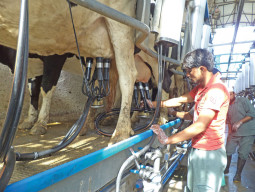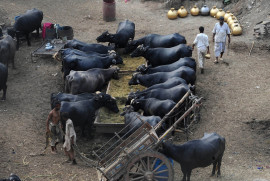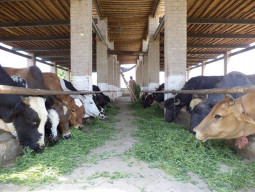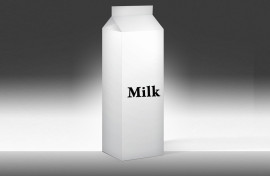
LAHORE:
The province of Punjab, though boasting of a huge population of livestock and contributing a major share to the agricultural sector, is underperforming and is yet to tap its full potential.
When viewed in terms of milk production, observers see a clear divide in per animal productivity for small-scale cattle breeders and medium-sized or corporate farmers.
About 95% of cattle breeders in the province are small-scale farmers with three or fewer animals – cow or buffalo, statistics show.
For these farmers, who usually have scarce finances and seldom embrace state-of-the-art practices, per animal productivity stands lower at an average of eight litres per day for cows and four litres per day for buffaloes.
Setting aside corporate farming, the breeders who have more than three animals are getting a much better yield – about 10 litres of milk per buffalo per day. They have managed to increase the stock of cattle over the years with the adoption of necessary farm practices like regular vaccination, provision of healthy fodder, better farm management, etc.

Punjab’s total population is 95.153 million, of which 64.794 million people live in rural areas. With 25,914 villages, the province has 21.26 million head of buffaloes and cows number about 18.01 million, according to data provided by the Punjab Livestock Department.
The province produces 29.34 million tons of milk annually and per capita milk availability is 259 litres per annum.
Though the 5% medium-sized cattle farmers have financial resources to increase animal productivity and the stock of cattle as well as reduce mortality, for the rest of the breeders the Punjab Livestock Department is the only hope.
The department must shoulder the responsibility to help these small-scale farmers to protect animals from contracting diseases, replace low-yield with high-yield breeds and improve genetics, but nothing significant has emerged.
The department has about 22 farms across Punjab where different projects are going on but annual growth of livestock in the province is 4%.
Per animal yield is believed to be very low when compared with productivity in the region and the world, genetic improvements have not been done and the department is not approaching farmers with an improved outlook.
Challenges
Farmers argue that the core issues faced by them have not been addressed and they get limited assistance from the livestock department because of allocation of insignificant resources in the budget.
“The government should declare emergency in the livestock sector and choose a district for introducing disease-free zones,” suggested Hamid Malhi, Director of Farmers Associates Pakistan while talking to The Express Tribune.
Once successful, this model could be expanded to all districts of the province, which would definitely increase animal productivity, he said.
“Our most valuable breeds like Cholistan cattle need to be protected along with other types of animals like Sahiwal and Neeli Ravi breeds,” Malhi said. “Genetic improvement in these local breeds is the only solution as they need much less care compared with imported cows which require a certain atmosphere and carry a high cost that can only be borne by corporate farmers.”
Long-term projects
Dismissing the perception that the government was not performing up to the mark, Punjab Livestock Department Additional Secretary Khursheed Ali Zaidi said they were working on some long-term projects that in the end would produce the best breeds.
According to him, the department is engaged in extensive research work, focusing on animal health, provision of fodder or silage throughout the year for better milk production, preserving precious breeds and improving genetics.
“We have started a progeny testing programme for genetic improvement, provide silage to the farmers during shortage of fodder and regularly maintain a record of selected cattle to see if our work is really helping in increasing per animal yield,” he added.
Published in The Express Tribune, April 28th, 2014.
Like Business on Facebook, follow @TribuneBiz on Twitter to stay informed and join in the conversation.




















1713264570-0/Tribune-Collage-Feature-Images-(9)1713264570-0-270x192.webp)
























COMMENTS
Comments are moderated and generally will be posted if they are on-topic and not abusive.
For more information, please see our Comments FAQ